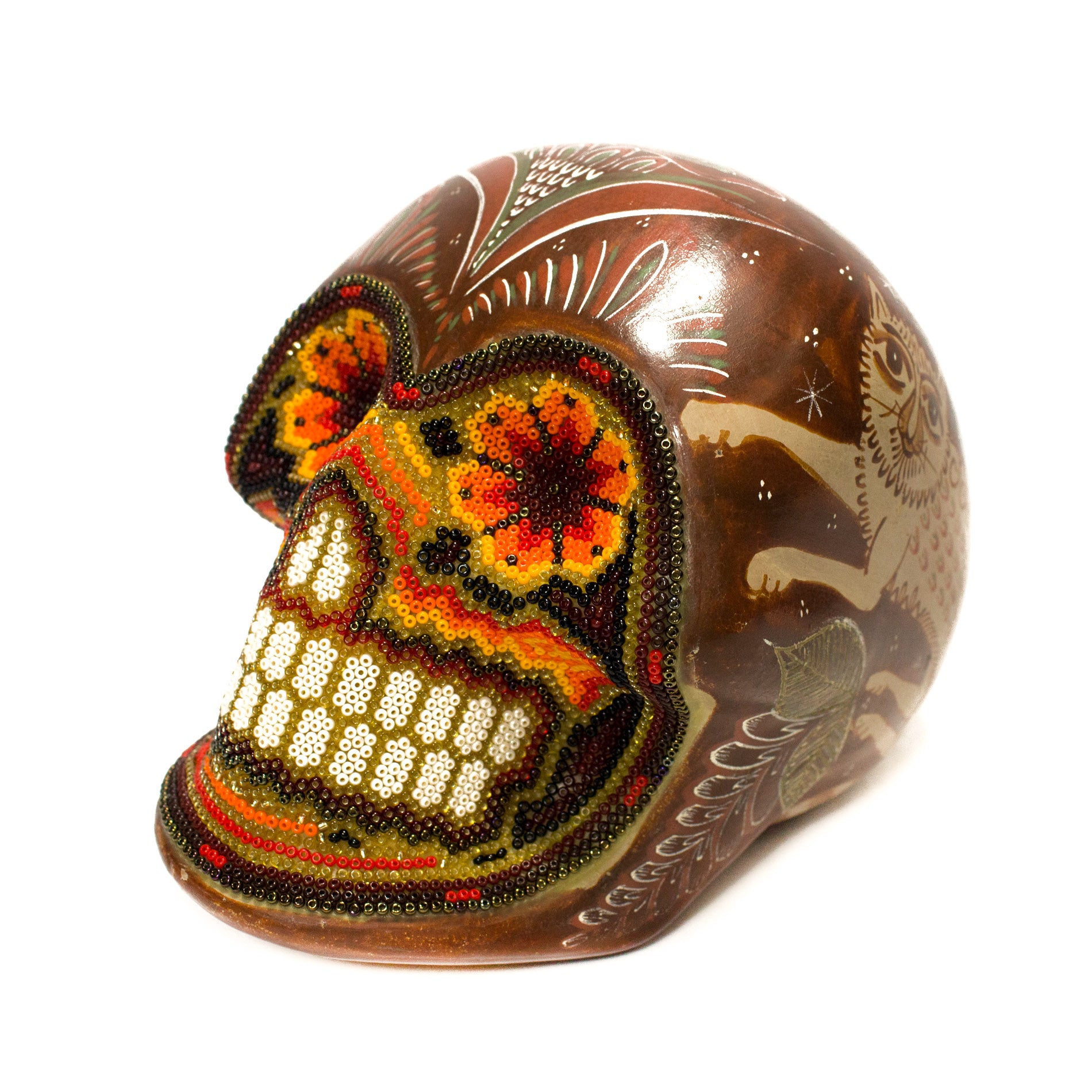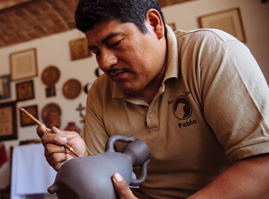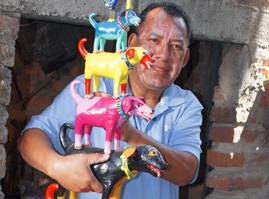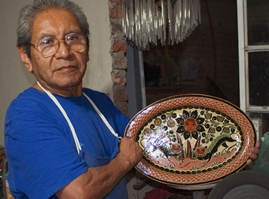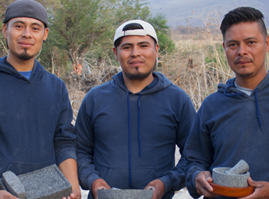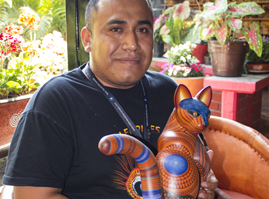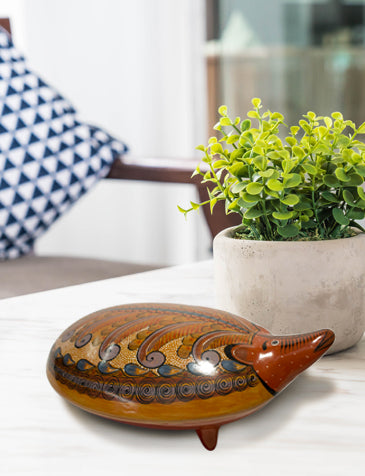Fishes Round Shaped Tray, Burnished Clay
- Sold By: FERNANDO JIMON MELCHOR
- Type: BURNISHED CLAY
The two fishes featured in this piece are each a work of art on their own, composed with Petatillo, Geometric and line patterns, this tray is an art show by itself. Hand-molded and hand-painted by Master Artisan Fernando Jimon Melchor, all with his Award Winning Most Meticulous style, which channels the dedication and tradition of five Generations of Artisans in his family and has sought to preserve Tonala’s iconic techniques.
Details:
This piece is currently not in stock. Once your order is processed, the artisan will receive an order to produce a replica of the item you ordered. Given the handcrafted and artistic nature of their pieces, your purchase may have some variation in decoration and shape. It is these same variations that make every item unique.
Elaboration times range from 25-35 days.
Measurements:
2.36" high x 9.84" diameter
Weight:
1.61 lbs
Burnished Clay is one of Pottery's oldest techniques, as well as the one with the most Pre-Hispanic tradition, from which other techniques came to be. Drawing mastery is one of its most notable features, represented with a “pure" decorative style, which is predominant in these pieces, including abstract floral motives, symbolic animal representations and even geometric shapes. Traditional Mexican Elements are added to its themes: Such as the Eagle, Snake, Nahual (A Shapeshifting being commonly found in the Mexican mythology), Nopal (Cactus), and Pre-Hispanic patterns that form the synthesis of a very particular and characteristic scenario.
For its elaboration, clay-filled molds are used. The handles, “ears”, and other details are molded separately, and then embedded on the whole piece. It is then left to dry, before getting a soft sanding. After that, the piece is given an “Engobe” bath (a watery mix of clays) with the dual purpose of covering the smallest pores and serving as a background base for the paint. The painting of the design is achieved by mixing local types (of clay) with different tones.
Burnished Clay acquires its name from the shimmer obtained by rubbing the pieces with a burnishing tool made from a mineral named pyrite. The burnishing process starts by sanding the raw piece with river stones or very thin wet sanding paper. Once the piece is dry, it is bathed with a color that serves as a background for the decoration. Colors applied to the piece are all from mineral origin, prepared by mixing liquefied clay from the region, known as “flor de tierra” (or the Soil’s flower in English). For painting, several different traditional brushes are used, some of them made from cat’s fur, dog fur, squirrel’s tail fur, or even Fox’s tail fur. Once the piece is decorated, it is then burnished. The whole production process comes before the piece is fired, therefore, if a piece is not well crafted, it may be damaged while in the fire. The firing temperatures oscillate around 600ºC (around 1112 Fahrenheit), traditionally using firewood obtain a low flame.
Fernando Jimon Melchor
Coming from a Family with 5 generations of artists in Tonala, Fernando Jimon Melchor and his artworks have become a referent of quality and craftsmanship. He was born in 1971 and developed the interest in pottery when he was roughly 9 years old.
When he was years old, he started attending more and more to her Grandmother’s workshop, until eventually, he crafted several miniature pieces of his own.
His pieces started being showcased in competitions and gaining attention while he was just 13 years old, and from then and on he decided to dedicate to it entirely.
He has even presided Artistic commissions and associations seeking to preserve the unique and traditional style of Tonala’s Folk Art.
His pieces are Masterful, including intricate patterns, some of them combining Petatillo patterns and Pointillism backgrounds, geometric patterns and clean strokes, he has specialized in both Burnished Clay and Bandera Clay pieces, mostly incorporating the traditional iconography of Tonala. His work is world renown, and the minuteness and effort applied to his beautiful aesthetics are all a signature of his work.

